When it comes to choosing a car, most people are drawn to eye-catching features like performance, speed, and fuel efficiency. These factors can certainly make a vehicle more attractive to buyers, especially car enthusiasts or gearheads who are passionate about powerful engines and fast rides.
However, there’s one key aspect that often lurks in the background but is just as important—reliability. While it may not be as exciting to think about, engine reliability plays a crucial role in how a car performs over time and how much money you’ll end up spending on repairs and maintenance.
Imagine owning a car with a fuel-efficient engine that saves you money on gas, only to have it break down every few months, draining your wallet with costly repairs. That fuel savings suddenly doesn’t seem like much of a benefit.
This is why reliability should be at the forefront of any decision when purchasing a car or an engine. A reliable engine won’t leave you stranded on the side of the road or force you to take countless trips to the mechanic. It provides peace of mind, knowing that your car will start every time you turn the key and get you where you need to go without any hiccups.
In the following sections, we’ll find which automakers have mastered the art of building engines that stand the test of time. These brands have earned their reputation by designing engines that not only offer great performance but also provide reliability that keeps them running for hundreds of thousands of miles.
10) Honda’s Reliable Powerhouses: The Engines That Stand the Test of Time
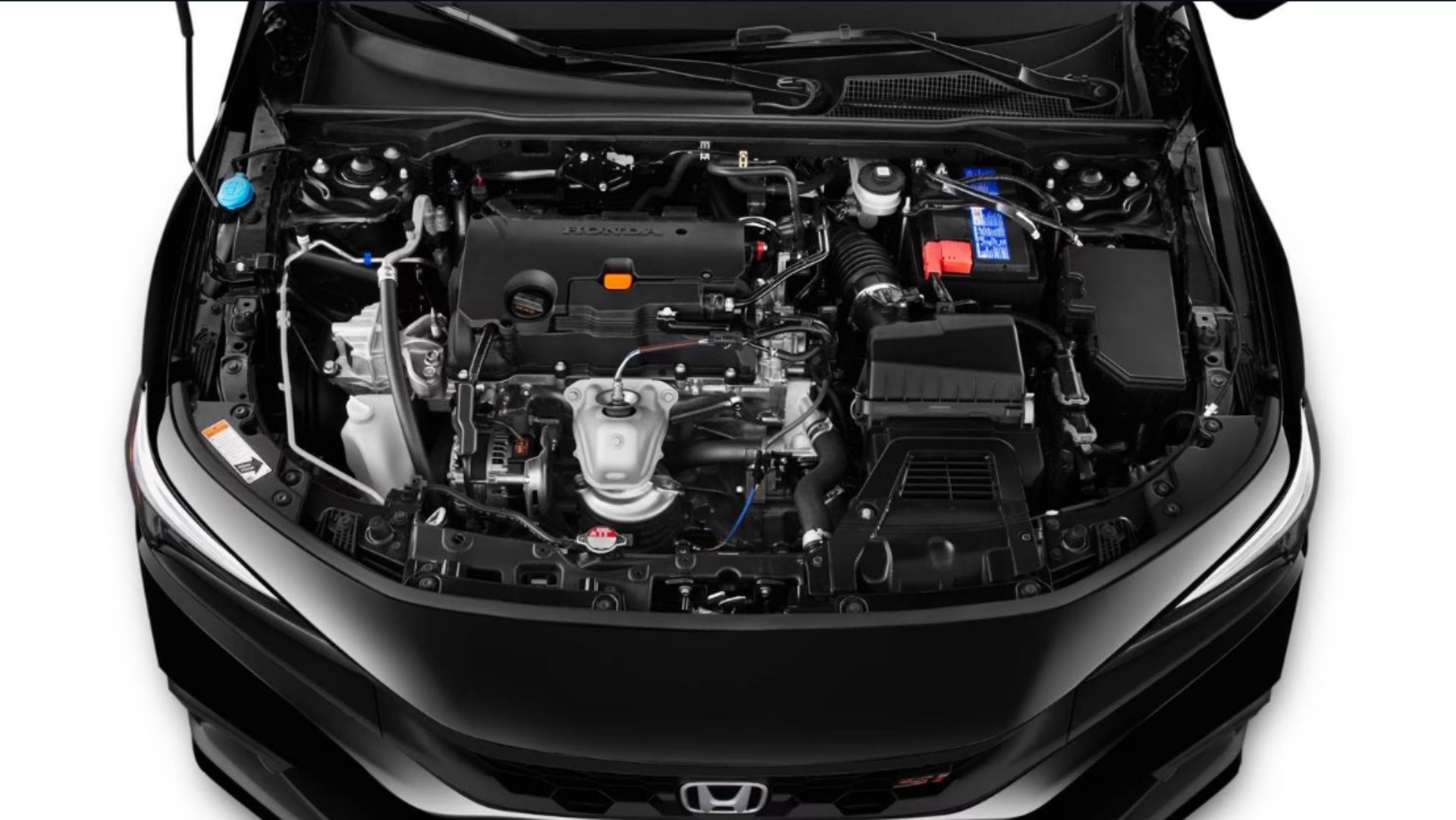
Honda has long been known for producing reliable, high-performing engines that stand the test of time. The Japanese automaker has earned a reputation for creating some of the most dependable engines on the market, thanks in part to its innovative engineering and the development of technologies like VTEC.
Honda’s Variable Valve Timing and Lift Electronic Control (VTEC) system revolutionized the industry by improving performance and fuel efficiency, making its engines not only powerful but also efficient and long-lasting. Two of Honda’s standout engines, the K20C1 and J35A1, continue to prove why the brand remains a top choice for drivers seeking reliability.
One of Honda’s most notable engine families is the K Series, with the K20C1 standing out as a prime example of Honda’s engineering excellence. This turbocharged 2.0-liter inline-4 engine is most famously used in the Honda Civic Type R, one of the brand’s flagship sports cars.
The K20C1 generates an impressive 306 to 320 horsepower, making it one of the most powerful four-cylinder engines available. It also produces between 295 and 310 lb-ft of torque, which gives it a remarkable balance of power and control on the road.
Despite its high performance, the K20C1 remains one of the most reliable turbocharged engines ever produced. Honda’s dedication to precision engineering and its commitment to using high-quality materials, such as lightweight aluminum, has made this engine durable enough to withstand the rigors of both daily driving and track use. The K20C1 is built to last, and this reliability is a key reason why Honda continues to dominate the market for compact, high-performance cars.
While the K20C1 represents Honda’s expertise in producing small, turbocharged engines, the J35A1 showcases the brand’s ability to build powerful, naturally aspirated V6 engines.
The J35A1 is part of Honda’s J Series, a family of V6 engines used in a variety of Honda vehicles, from the Accord to the Odyssey and Pilot. The 3.5-liter V6 produces between 210 and 310 horsepower and offers a torque range of 229 to 272 lb-ft, depending on the vehicle it’s paired with. Like the K20C1, the J35A1 is constructed using aluminum, making it both lightweight and strong.
The J35A1 is widely praised for its longevity, with many owners reporting that their engines have lasted for hundreds of thousands of miles with minimal maintenance.
This engine is especially popular in Honda’s larger vehicles, where its balance of power, fuel efficiency, and reliability shines through. Whether it’s powering a family minivan or a midsize SUV, the J35A1 delivers a smooth and dependable driving experience, further solidifying Honda’s reputation for building bulletproof engines.
What sets Honda’s engines apart from the competition is not just their impressive power output or fuel efficiency, but their ability to maintain top performance over time. Honda engines are designed to endure the challenges of everyday driving, and even after years of use, they continue to operate with minimal issues. This level of dependability is a testament to Honda’s commitment to quality control during manufacturing and its innovative approach to engine design.
Another key aspect of Honda’s engine reliability is the brand’s use of advanced technologies. VTEC, for example, allows engines like the K20C1 and J35A1 to optimize valve timing and improve performance across a wide range of driving conditions. This system helps engines deliver power when it’s needed while also maintaining fuel efficiency, making Honda engines ideal for both performance enthusiasts and everyday drivers.
Honda’s engines have also earned a reputation for being easy to modify and upgrade, which is a big plus for car enthusiasts. The K20C1, for example, has become a favorite among tuners looking to extract even more power from the engine, with aftermarket modifications easily pushing its output beyond 400 horsepower.
Despite the additional stress these upgrades can place on the engine, the K20C1 remains incredibly durable, further underscoring its reputation for reliability.
Honda’s K20C1 and J35A1 engines exemplify the brand’s ability to produce reliable, high-performing powerplants that can stand the test of time. Whether you’re driving a compact sports car or a family SUV, Honda’s engines are designed to deliver dependable performance for years to come.
With a combination of innovative technology, precision engineering, and a commitment to quality, it’s no wonder Honda continues to be a top choice for drivers seeking a vehicle that’s as reliable as it is powerful.
9) Toyota’s Reputation for Reliability: The Engines That Stand the Test of Time
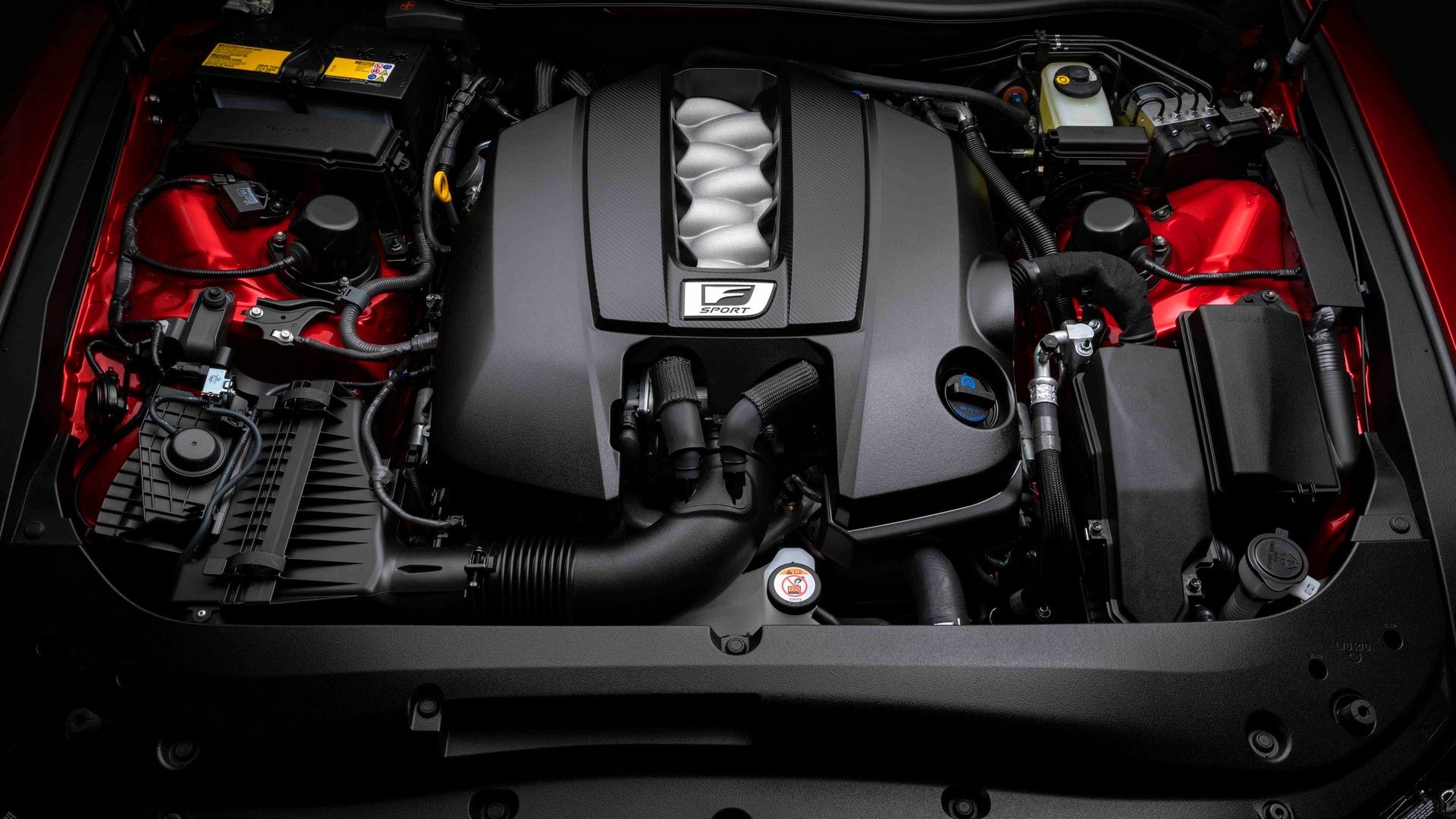
When it comes to building cars that last, Toyota is one brand that always comes to mind. Known for its exceptional reliability, Toyota has consistently ranked among the top automakers in dependability. In fact, its luxury division, Lexus, secured the top spot in the 2023 J.D.
Power Vehicle Dependability study, while Toyota itself ranked an impressive seventh. Beyond producing cars that rarely leave their owners stranded, Toyota has a legacy of designing engines that are both durable and dependable, making them a top choice for drivers who value long-term performance.
One of Toyota’s standout features is its ability to create engines that can handle the wear and tear of everyday use while maintaining their efficiency and power for years. A perfect example of this is the 2GR-FSE engine, a 3.5-liter V6 that was introduced in 2004.
This engine has proven its reliability over the years and has been used in a wide range of vehicles, including the Lexus IS 350, Toyota Camry, and even the Lotus Evora. The 2GR-FSE’s versatility is a testament to its durability, making it a favorite among car enthusiasts and regular drivers alike.
The 2GR-FSE engine is built with a variety of modern technologies that improve its performance and efficiency. It features direct fuel injection, variable valve timing, and a lightweight aluminum construction, all of which contribute to its longevity.
While it offers between 249 and 360 horsepower, depending on the vehicle it powers, what sets this engine apart is how it balances power with reliability. Whether you’re cruising on the highway or driving through city traffic, the 2GR-FSE delivers consistent performance without sacrificing durability.
But Toyota’s reputation for building long-lasting engines doesn’t stop with the 2GR-FSE. Another engine worth noting is the 2UZ-FE, a 4.7-liter V8 that has been a workhorse for Toyota’s larger vehicles. The 2UZ-FE, which has been used in models like the Toyota Land Cruiser and the Lexus LX, is a cast-iron block engine that emphasizes strength and toughness.
While it may not be as flashy as some of the more modern aluminum engines, the 2UZ-FE is built to withstand extreme conditions, making it ideal for off-road driving and heavy-duty tasks. Producing between 228 and 275 horsepower with torque ranging from 302 to 332 lb-ft, this engine is more about resilience than outright power.
What makes these engines, and Toyota engines in general, so reliable is the brand’s commitment to quality. Toyota focuses on precision engineering and strict quality control measures during manufacturing, ensuring that each engine can stand up to the demands of daily driving for years. It’s no wonder that Toyota vehicles are often associated with longevity, with many owners boasting of their cars lasting well over 200,000 miles with minimal issues.
For drivers looking to get the most out of their investment, choosing a vehicle with a reliable engine is essential. This is particularly true for those who plan to keep their car for a long time or are looking to modify it for enhanced performance.
Toyota’s engines, particularly the 2GR-FSE and 2UZ-FE, provide a solid foundation for both everyday driving and performance upgrades. Whether you’re adding a turbocharger, tuning the engine for more horsepower, or just looking for a car that won’t break down, these engines have proven they can handle it all.
Toyota’s ability to produce long-lasting engines is a big reason why the brand continues to be a leader in the global automotive market. It’s not just about building cars that look good or perform well on the road; it’s about creating vehicles that can be trusted to last. The 2GR-FSE and 2UZ-FE are prime examples of Toyota’s commitment to durability, and their widespread use in a variety of vehicles highlights just how versatile and dependable they are.
Toyota’s legacy of reliability is well-earned, thanks to engines like the 2GR-FSE and 2UZ-FE. These engines offer a combination of power, efficiency, and durability that few other automakers can match.
Whether you’re driving a family sedan, an off-road SUV, or a high-performance sports car, Toyota’s engines ensure that you can enjoy your vehicle for many years to come without constantly worrying about repairs or breakdowns. So, if you’re in the market for a long-lasting car, Toyota’s engines should definitely be at the top of your list.
8) General Motors’ Powerhouses: The Reliable Engines That Keep GM on Top
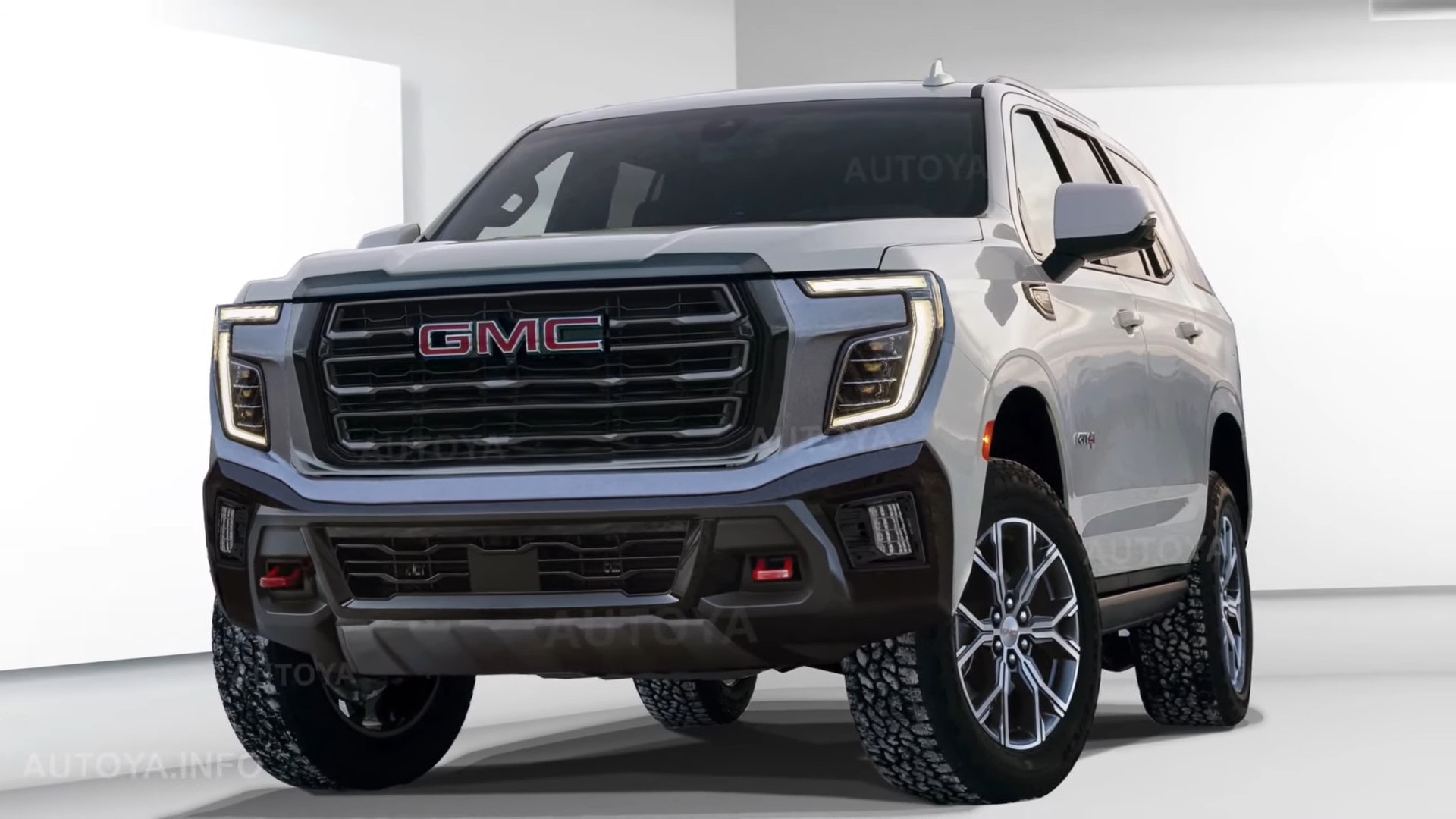
General Motors (GM) has long been a pioneer in creating reliable engines that deliver a balance of power, efficiency, and durability. From muscle cars to everyday commuters, GM engines have proven their worth across a wide range of vehicles.
Much like its rival, Ford, GM has perfected the art of designing engines that last. Two of GM’s most notable and reliable engines are the LT2 V8 and the EcoTec inline-4, each serving different purposes but both exemplifying the quality that GM is known for.
The LT2 engine is a testament to GM’s ability to create powerful, high-performance engines without sacrificing reliability. This 6.2-liter V8 engine is used in the latest Chevrolet Corvette, one of GM’s most iconic cars.
The LT2 produces an impressive 490 to 495 horsepower and generates 465 to 470 lb-ft of torque, making it a powerhouse under the hood. What makes this engine stand out, beyond its power, is its durability. Despite being built for performance, the LT2 is constructed with aluminum, which helps keep the weight down while ensuring the engine can handle the high stresses that come with sports car driving.
One of the reasons the LT2 is so reliable is GM’s attention to detail in its design. The engine’s advanced cooling system and precision engineering help it withstand high temperatures and maintain performance over long periods of use. Even when pushed to its limits on the track, the LT2 remains stable and efficient, providing drivers with the confidence that their engine will keep running smoothly for years to come.
On the other end of the spectrum, GM’s EcoTec engine family demonstrates the company’s ability to create reliable engines for everyday driving. The EcoTec engines are four-cylinder powerplants available in various displacements, ranging from 2.0 to 2.5 liters.
Despite their smaller size compared to the LT2, these engines have been incredibly versatile, powering many of GM’s commuter cars for over two decades. Models like the Chevrolet Cruze, Malibu, and even some GMC vehicles have relied on EcoTec engines for their fuel efficiency and reliability.
One of the standout features of the EcoTec engine family is its ability to deliver solid performance while maintaining excellent fuel economy. The EcoTec engines produce anywhere from 196 to 450 horsepower, depending on the model and tuning.
The higher-end variants, like the 2.5-liter version used in the Saleen S1 supercar, can generate up to 450 horsepower. This is a testament to the engine’s versatility, as it can be tuned for both high-performance applications and more standard, fuel-efficient use in everyday cars.
Durability is another key feature of the EcoTec engines. Like the LT2, the EcoTec engines are made from aluminum, which not only reduces weight but also improves longevity by resisting corrosion.
These engines are designed to last for hundreds of thousands of miles with minimal issues, making them a favorite among drivers looking for a reliable, long-term investment. The simplicity of EcoTec’s design, combined with GM’s rigorous testing processes, ensures that these engines remain dependable even after years of use.
What truly sets GM’s engines apart is the company’s commitment to innovation and quality control. Whether it’s the high-performance LT2 or the efficient EcoTec, GM has consistently pushed the boundaries of engine design to create units that are not only powerful but also long-lasting.
GM engines are known for their ease of maintenance and their ability to perform consistently under various driving conditions. This reliability has helped GM maintain a loyal customer base, with many drivers sticking with the brand for decades.
General Motors has proven time and again that it can build engines that stand the test of time. The LT2 and EcoTec engines are shining examples of GM’s dedication to producing reliable, durable powerplants that cater to a wide range of drivers.
Whether you’re looking for a high-performance engine for a sports car or a dependable, fuel-efficient engine for your daily commute, GM offers some of the best options in the market. With a combination of advanced technology, precise engineering, and a focus on longevity, GM’s engines continue to set the standard for reliability in the automotive world.
7) Volvo’s Reliable Engines: The B21 and D5 Powerplants
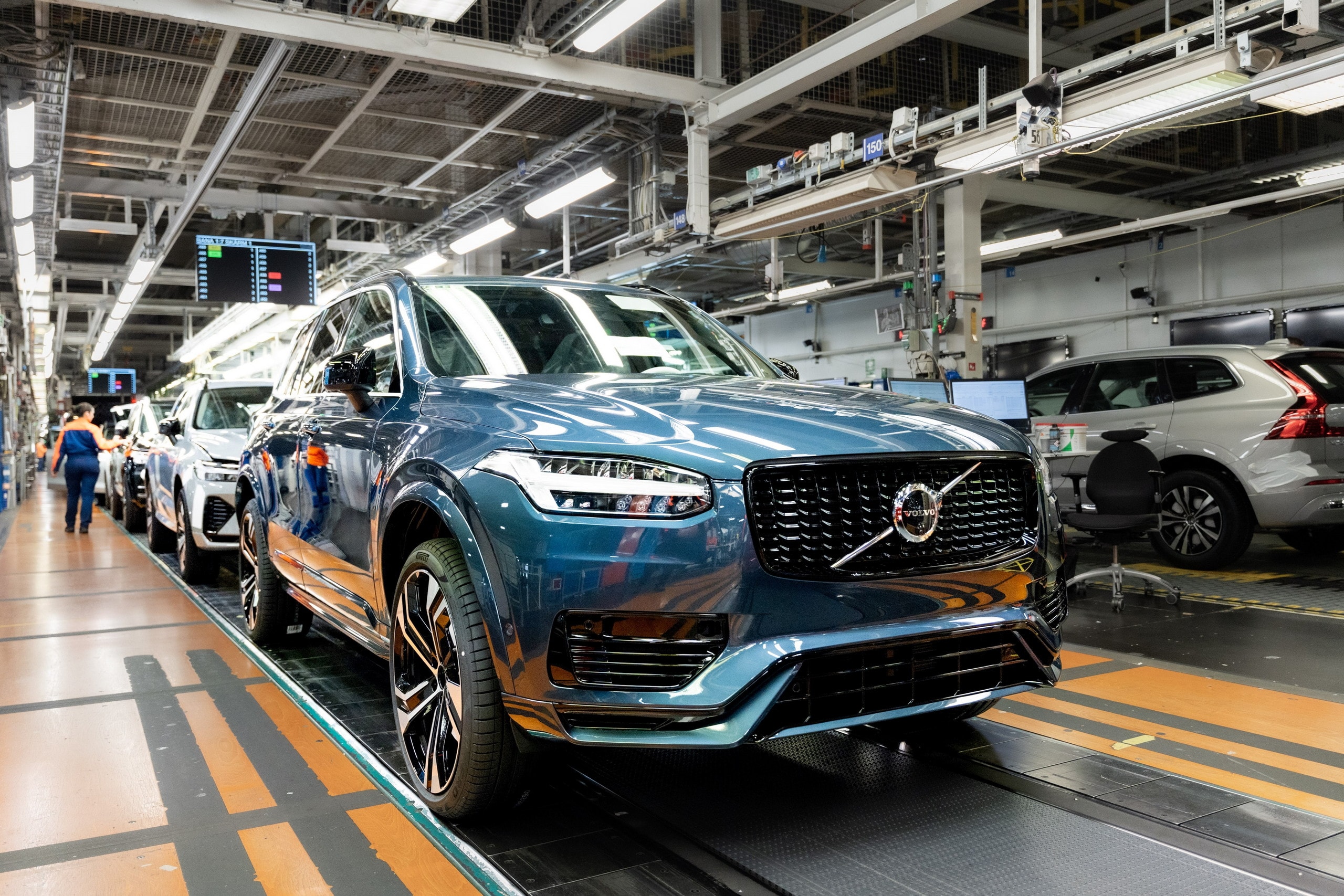
Volvo is a brand that has built a strong reputation for safety and durability, often becoming a popular choice for those seeking a reliable vehicle. The Swedish automaker has engineered a range of robust engines over the years, with two standout examples being the B21 and the D5. These engines exemplify Volvo’s commitment to quality and long-lasting performance.
The B21 is a 1.8 to 2.3-liter inline-six engine known for its impressive longevity and reliability. This engine has been a workhorse for Volvo, particularly in models like the 245 GL station wagon. The B21 engine produces between 90 to 200 horsepower and offers torque ranging from 116 to 214 lb-ft.
One of the most remarkable stories associated with the B21 involves a 1979 Volvo 245 GL that clocked an astonishing 1.63 million miles over its lifetime. Throughout its journey, the vehicle had three different B21 engines installed, showcasing the engine’s durability. The most impressive of these engines managed to run for an incredible 620,000 miles before it was replaced. Such longevity is a testament to the engineering excellence that Volvo is known for.
The D5 is another notable engine from Volvo, featuring a 2.0 to 2.4-liter inline-five configuration. This diesel engine is known for its efficiency and strength, producing between 110 to 220 horsepower and delivering robust torque between 207 to 332 lb-ft. The D5 has become a popular choice for drivers who seek a reliable diesel option in their vehicles.
The aluminum construction of the D5 engine contributes to its lightweight design and efficiency, making it suitable for a variety of Volvo models. With its balance of power and fuel economy, the D5 has established itself as a reliable option for both everyday driving and long-distance journeys.
Volvo’s reputation for building durable vehicles extends to its engines, which are designed to withstand the test of time. The B21 and D5 engines exemplify the brand’s commitment to quality and performance. Volvo has consistently prioritized the longevity and reliability of its powertrains, making them a trusted choice for drivers around the world.
Volvo has earned its place as a leader in automotive reliability, and the B21 and D5 engines are prime examples of this commitment. With stories of extraordinary mileage and dependability, these engines showcase the quality and engineering that Volvo is known for. As Volvo continues to innovate and develop new powertrains, drivers can trust that they are getting a vehicle built to last.
6) Mercedes-Benz Engines: The Unmatched Reliability of the M180 and M116
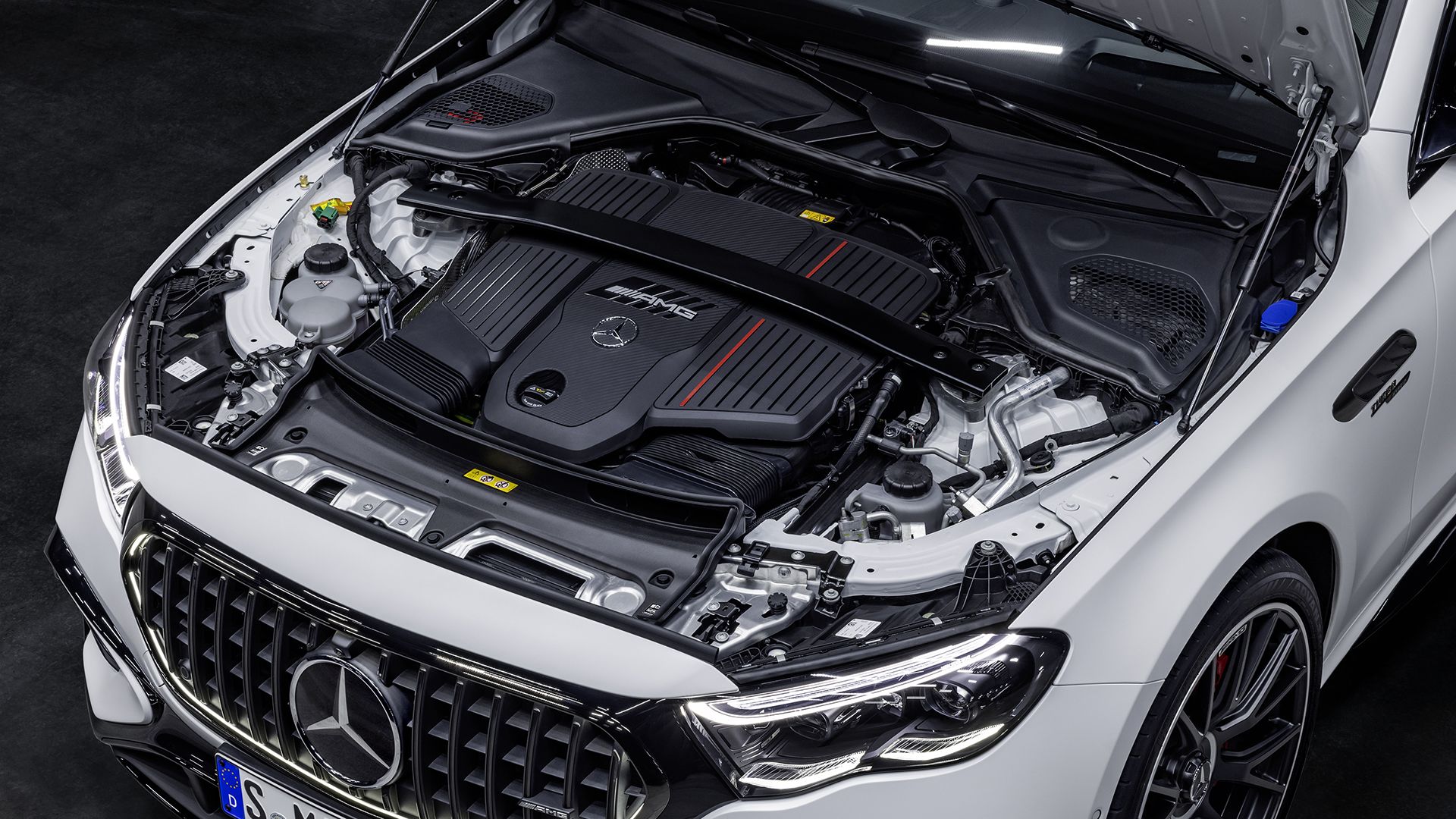
Mercedes-Benz is synonymous with luxury, performance, and engineering excellence. While modern engines have shifted focus, many of the brand’s powertrains from the 20th century were renowned for their reliability and durability. Two standout examples are the M180 inline-six engine and the M116 V8, both of which have earned their places in automotive history for their impressive performance and longevity.
The M180 engine is an inline-six powerplant that was produced from the 1960s to the late 1980s. This engine has a displacement range of 2.2 to 2.8 liters and delivers between 80 and 134 horsepower, with torque ratings of 139 to 181 lb-ft. Known for its solid construction, the M180 engine is often celebrated for its exceptional reliability.
One remarkable story involves a 1966 Mercedes-Benz 250 SE powered by the M180 engine, which managed to accumulate an astonishing 1.4 million miles. This impressive mileage is a testament to the engine’s durability and the quality of Mercedes-Benz engineering. Many owners have found that with proper maintenance, the M180 can provide reliable performance for decades.
Another notable engine from Mercedes-Benz is the M116 V8, produced from 1969 to 1991. This powertrain boasts a larger displacement of 3.5 to 4.2 liters, generating between 156 and 228 horsepower and torque figures ranging from 196 to 229 lb-ft. The M116 engine was used in several iconic Mercedes models, including the W116 and W126 sedans, as well as the R107 and C107 sports cars.
The M116 is celebrated not just for its power but also for its robustness. This engine was engineered with high-quality materials and construction, resulting in a powerplant that could withstand the rigors of daily driving while still delivering impressive performance. Many owners have reported that with regular maintenance, the M116 engine remains reliable even after hundreds of thousands of miles.
Both the M180 and M116 engines exemplify Mercedes-Benz’s commitment to quality and durability. During a time when many manufacturers were cutting corners, Mercedes focused on engineering excellence, resulting in powertrains that could endure the test of time. These engines have become legendary among automotive enthusiasts, demonstrating that reliability and performance can go hand in hand.
The M180 and M116 engines represent some of the best powertrains ever produced by Mercedes-Benz. Their impressive reliability and longevity have earned them a special place in automotive history. As the brand continues to innovate and develop new technologies, the legacy of these engines serves as a reminder of Mercedes-Benz’s dedication to quality and performance, solidifying its reputation as a leader in the automotive industry.
5) Ford Engines: The Unmatched Durability of the 460 and Coyote
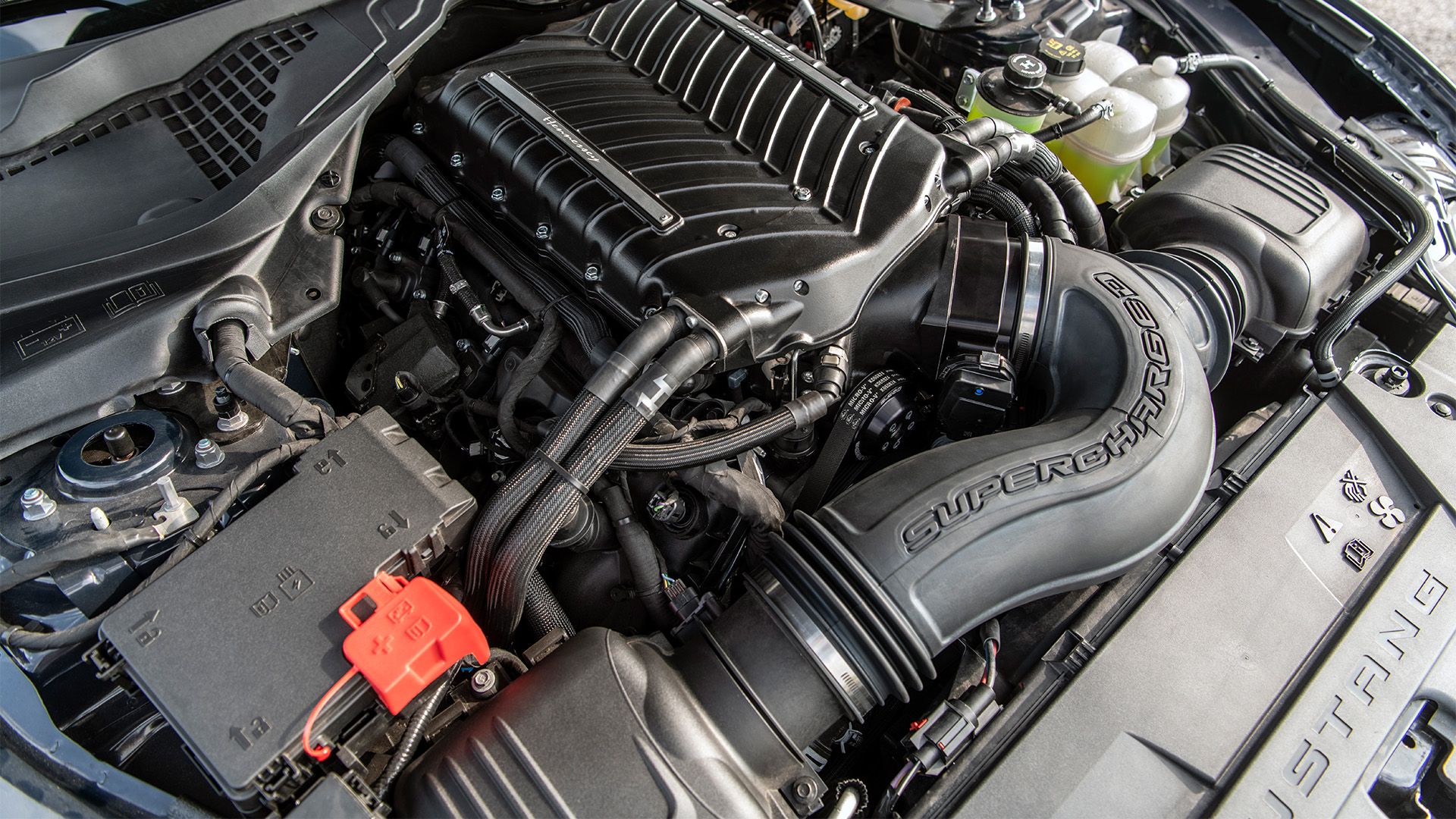
Ford has a long and storied history in the automotive world, dating back over a century. Throughout this time, the company has produced a wide variety of engines known for their reliability and durability. Two standout examples of Ford’s engineering excellence are the 385 Series 460 cubic inch (7.5-liter) V8 and the modern Coyote engine. Both of these power plants showcase Ford’s commitment to producing reliable and powerful engines.
The 460 engine, part of Ford’s 385 engine family, is a robust V8 that has earned a reputation for its strength and durability. This engine was in production for over 30 years and was used in a wide range of vehicles, including passenger cars, trucks, and vans. The 460 cubic inch engine delivers between 197 to 365 horsepower and generates torque ranging from 353 to 500 lb-ft, making it a versatile choice for various applications.
One of the key reasons for the 460’s popularity is its ability to endure high mileage. Many vehicles equipped with the 460 V8 have racked up hundreds of thousands of miles without major issues, thanks to its solid construction and engineering. This durability has made the 460 a favorite among truck owners and enthusiasts alike.
Ford has continued its tradition of building reliable engines with the Coyote V8, which has become synonymous with performance, particularly in the Mustang lineup. The Coyote engine has a 5.0-liter displacement and is known for its impressive power output, ranging from 360 to 500 horsepower, along with torque figures between 380 to 430 lb-ft.
What sets the Coyote apart is its advanced engineering, including a lightweight aluminum construction that enhances performance and efficiency. The engine features a dual overhead cam design and variable valve timing, making it responsive and powerful across the RPM range. Ford’s commitment to quality is evident in the Coyote, as it continues to deliver reliable performance for both daily drivers and high-performance enthusiasts.
Both the 460 and Coyote engines are prime examples of Ford’s dedication to building durable powertrains. The 460 has proven its longevity and toughness over decades, while the Coyote demonstrates Ford’s ability to adapt and innovate in modern automotive engineering. Ford has consistently focused on quality, ensuring that its engines remain some of the most reliable in the market.
Ford has built a legacy of producing reliable and powerful engines that stand the test of time. The 460 V8 and Coyote engine are perfect representations of this commitment to durability and performance. Whether in classic trucks or modern sports cars, Ford engines have earned their place in automotive history, proving that reliability and power can go hand in hand. As Ford continues to evolve, its dedication to engineering excellence remains a cornerstone of its success.
4) Hyundai’s Reliable Engines: A Closer Look at the Nu and Gamma
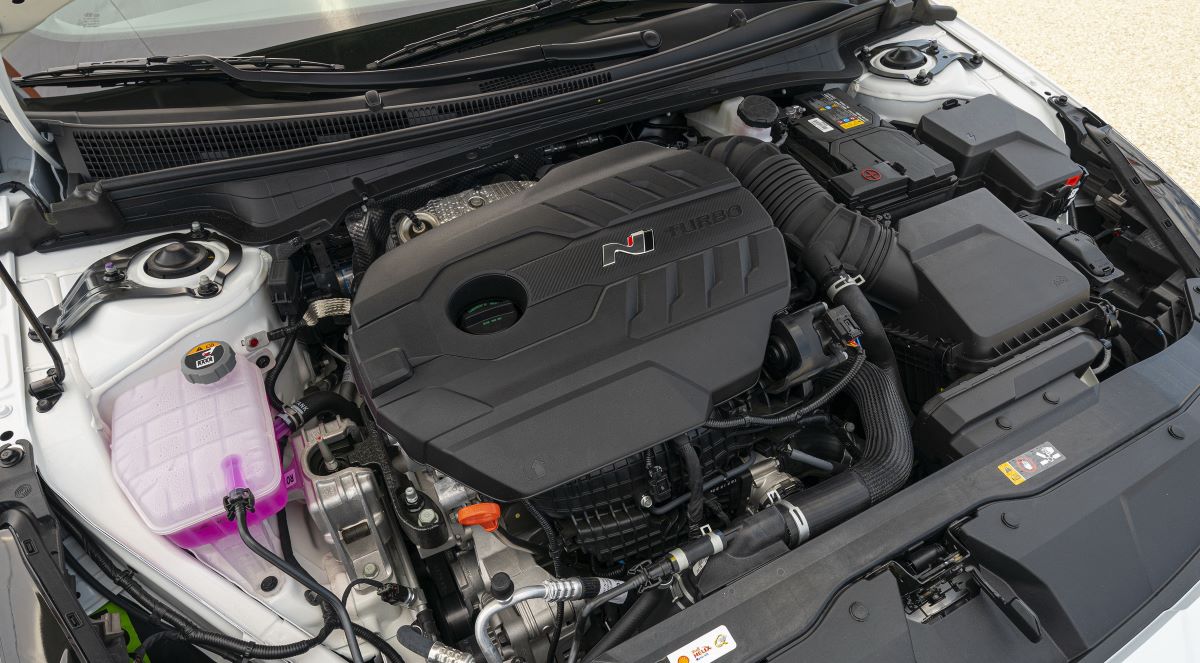
In automobiles, Hyundai has emerged as a strong contender known for its reliability and performance. As one of the newer players in the automotive industry, the South Korean brand has made significant strides in building a reputation for dependable vehicles. A big part of this success can be attributed to their innovative engine designs, particularly the Nu and Gamma engines.
The Nu engine is a standout feature of many Hyundai and Kia models, such as the Hyundai Elantra and Kia Forte. This 1.8-liter inline-four engine is known for its efficiency and reliability.
A remarkable example of the Nu engine’s durability comes from a 2013 Hyundai Elantra, which managed to reach an incredible milestone of over 1 million miles. This car was used as a delivery vehicle, covering around 200,000 miles each year, showcasing how well the Nu engine can perform under demanding conditions.
With power output ranging from 147 to 174 horsepower and torque between 131 and 157 lb-ft, the Nu engine provides a balance of performance and fuel efficiency. Its aluminum construction contributes to its lightweight design, improving vehicle dynamics and fuel economy.
Hyundai’s Gamma engine family includes smaller 1.4 to 1.6-liter inline-four options. These engines are known for their versatility, delivering power ranging from 99 to 201 horsepower and torque between 100 and 195 lb-ft. The Gamma engine is designed to provide reliable performance for daily driving and has been used in various Hyundai models, including the Accent and i30.
Similar to the Nu engine, the Gamma also features an aluminum build, which enhances its durability while keeping the weight down. This combination allows for better fuel efficiency and a more responsive driving experience.
Hyundai’s commitment to building reliable engines has paid off in spades. The company has worked hard to change the perception of being a budget brand to becoming a manufacturer known for quality and dependability. The successes of the Nu and Gamma engines are clear indicators of Hyundai’s dedication to engineering excellence.
Hyundai has made significant advancements in creating reliable engines like the Nu and Gamma. These powertrains not only provide impressive performance but also showcase durability and efficiency that rival some of the more established brands in the market.
As Hyundai continues to innovate and improve its lineup, drivers can feel confident in the reliability and performance of their vehicles, making Hyundai a brand to watch in the automotive industry.
Hyundai’s engines represent a blend of innovation, performance, and efficiency, reflecting the brand’s commitment to meeting the diverse needs of drivers worldwide.
Over the years, Hyundai has developed a range of engines that power everything from compact cars to SUVs and performance-oriented vehicles, with an emphasis on cutting-edge technology and sustainability. As a part of the Hyundai Motor Group, which includes Kia, the company benefits from shared technology and engineering expertise, enhancing its engine offerings.
One of Hyundai’s notable engine families is the Gamma series, which includes a range of inline-four engines. The 1.6L and 2.0L engines from this series have been widely utilized across various models, such as the Hyundai Elantra and Tucson.
These engines are known for their balance of performance and fuel efficiency, making them well-suited for everyday driving. The Gamma engines feature advanced technologies like Dual CVVT (Continuously Variable Valve Timing) that optimizes performance and emissions across different driving conditions.
Another significant engine family is the Nu series, which includes both naturally aspirated and turbocharged variants. The Nu 2.0L engine, for instance, powers popular models like the Hyundai Sonata and Santa Fe.
This engine offers a smooth and responsive driving experience while maintaining competitive fuel efficiency. The turbocharged version of the Nu engine, known as the Nu 1.6T, delivers enhanced performance, making it a favorite among those seeking a sportier driving experience. Turbocharging allows Hyundai to provide greater power without compromising fuel economy, aligning with modern drivers’ expectations.
Hyundai has also embraced hybrid and electric technology as part of its commitment to sustainability. The company’s hybrid engines, such as the ones found in the Ioniq and Sonata Hybrid, combine traditional gasoline engines with electric motors to improve fuel efficiency and reduce emissions.
These hybrid powertrains are designed to seamlessly transition between electric and gasoline power, offering a smooth and efficient driving experience. The Ioniq Electric, for example, showcases Hyundai’s advancements in electric vehicle technology, featuring a robust electric motor paired with a high-capacity battery that provides an impressive range.
The recently introduced Smartstream engine family marks Hyundai’s foray into next-generation powertrains. This lineup emphasizes efficiency, performance, and environmental friendliness.
The Smartstream engines employ technologies such as improved thermal efficiency and reduced friction, contributing to lower emissions and better fuel economy. For instance, the Smartstream 2.5L engine, found in models like the Sonata and Tucson, provides a balance of power and efficiency, making it an attractive option for consumers.
For performance enthusiasts, Hyundai’s N division has developed engines that emphasize sportiness and driving enjoyment. The 2.0L turbocharged engine found in models like the Hyundai Veloster N and i30 N offers exhilarating performance with a focus on responsiveness and power delivery.
This engine is paired with features like an active exhaust system, which enhances the auditory experience, making it a delight for driving enthusiasts. The N division’s dedication to performance is also evident in its chassis tuning and driving dynamics, which enhance the driving experience.
Reliability is a cornerstone of Hyundai’s engineering philosophy. The company employs high-quality materials and rigorous testing procedures to ensure that its engines can withstand the rigors of everyday driving. Many Hyundai engines are backed by a strong warranty, reflecting the company’s confidence in its products and providing peace of mind to consumers.
In addition to performance and reliability, Hyundai is committed to reducing the environmental impact of its engines. The company has implemented various technologies to minimize emissions, including advanced fuel injection systems and efficient combustion processes. As the automotive industry moves towards stricter environmental regulations, Hyundai is well-positioned to meet these challenges with its innovative engine technologies.
Hyundai’s global presence allows it to tailor its engines to different markets, accommodating varying consumer preferences and regulatory requirements. This flexibility has enabled Hyundai to remain competitive in the ever-evolving automotive, providing engines that resonate with drivers across regions.
Furthermore, the integration of technology such as turbocharging and hybrid systems demonstrates Hyundai’s responsiveness to changing consumer demands. As drivers increasingly seek vehicles that offer both performance and fuel efficiency, Hyundai’s diverse engine lineup ensures that there is something for everyone.
Hyundai’s engines exemplify the brand’s commitment to innovation, performance, and sustainability. With a diverse lineup that includes efficient inline-four engines, hybrid powertrains, and high-performance options, Hyundai continues to push the boundaries of engine technology.
Whether powering a compact sedan, a versatile SUV, or a thrilling performance vehicle, Hyundai engines deliver the balance of power and efficiency that modern drivers expect. As the automotive industry evolves, Hyundai’s dedication to developing advanced engine technologies positions it as a leader in the field, ensuring that its vehicles meet the demands of tomorrow’s consumers.
3) Nissan’s Reliable Engines: Spotlight on the VQ35DE and QR20DE
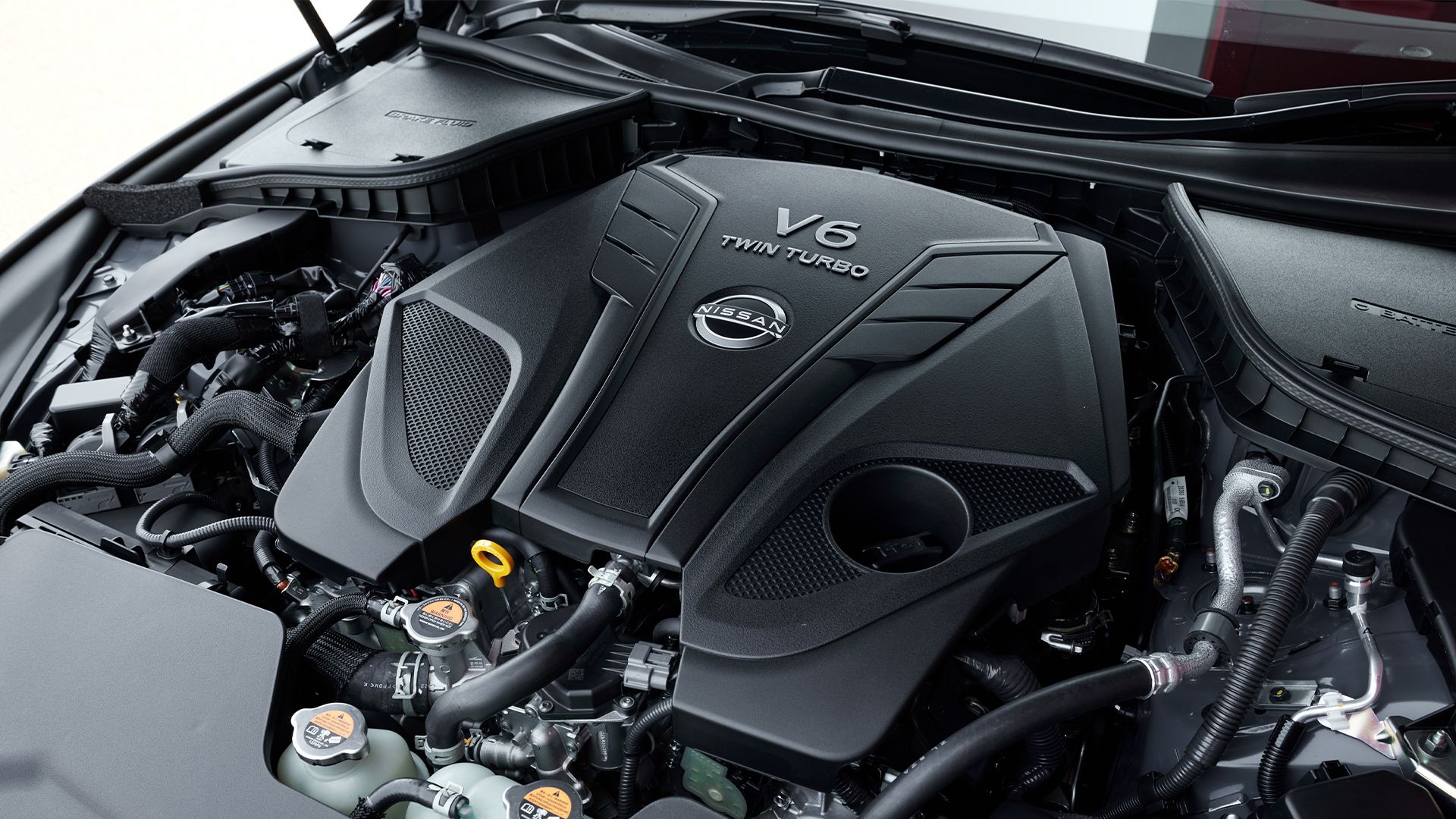
When it comes to reliability in the automotive industry, Japanese manufacturers, especially Nissan, are often at the top of the list. Nissan has built a strong reputation for producing dependable vehicles, thanks in large part to its impressive range of engines. Among these, the VQ35DE and QR20DE engines stand out for their reliability and performance.
The VQ35DE is a 3.5-liter V6 engine known for its power and reliability. It has been a key component in many popular Nissan models, including the Skyline, Pathfinder, Altima, and even the Renault Espace. This engine is celebrated for its impressive power output, which ranges from 228 to 300 horsepower, depending on the application. It also delivers strong torque, between 246 and 274 lb-ft, making it suitable for both everyday driving and more demanding situations.
One of the hallmarks of the VQ35DE is its aluminum construction, which not only makes it lightweight but also enhances its durability. This engine has earned a loyal following among car enthusiasts and everyday drivers alike, thanks to its smooth performance and low maintenance needs.
Another noteworthy engine in Nissan’s lineup is the QR20DE, which is a 2.0 to 2.5-liter inline-four engine. This engine is versatile, producing between 138 and 250 horsepower and delivering torque from 148 to 243 lb-ft. The QR20DE is known for its fuel efficiency and has been widely used in various Nissan models.
An impressive achievement for the QR20DE came from a 2007 Nissan Frontier, which managed to exceed the remarkable milestone of one million miles. This incredible durability illustrates the engine’s reliability and highlights Nissan’s commitment to building long-lasting powertrains.
Nissan’s focus on engineering excellence is evident in its extensive portfolio of engines. Both the VQ35DE and QR20DE showcase the brand’s commitment to creating reliable and efficient powertrains that can stand the test of time. Nissan has consistently prioritized quality and performance in its vehicles, which is why many drivers trust the brand for their transportation needs.
Nissan has established itself as a leader in the automotive industry, particularly when it comes to building reliable engines. The VQ35DE and QR20DE exemplify the brand’s dedication to performance and longevity. As Nissan continues to innovate and improve its engine technology, drivers can count on these powertrains to deliver a dependable and enjoyable driving experience for many years to come.
Nissan’s engines are a vital part of the company’s identity, renowned for their blend of performance, efficiency, and advanced technology. Over the years, Nissan has developed a diverse range of engines that power everything from fuel-efficient compact cars to high-performance sports cars and rugged SUVs. The company’s engineering philosophy emphasizes innovation and adaptability, ensuring that its engines meet the evolving demands of drivers around the globe.
One of the most significant achievements in Nissan’s engine development is the introduction of the VR and VQ engine families. The VQ series, in particular, has garnered acclaim for its performance and reliability.
This V6 engine family is known for its smooth operation, high power output, and durability. Available in various displacements, including 3.5L and 4.0L versions, the VQ engines have powered several Nissan models, including the popular Nissan Altima, Maxima, and the 350Z sports car. The VQ engine’s design incorporates lightweight materials and advanced technologies such as variable valve timing, enhancing both performance and fuel efficiency.
In addition to the VQ engines, Nissan has also made strides in developing four-cylinder engines, such as the QR and HR families. The QR25DE, a 2.5L inline-four engine, has been a mainstay in many Nissan vehicles, including the Altima and Rogue. Known for its balance of performance and fuel economy, the QR25DE features a DOHC design and employs technologies like dual overhead camshafts and variable valve timing. This engine family caters to a wide range of drivers seeking a reliable and efficient powertrain.
Turbocharging has become increasingly important in Nissan’s engine lineup, particularly with the introduction of the turbocharged four-cylinder engines. The 1.6L turbocharged engine, found in models like the Nissan Juke and Sentra, delivers a spirited driving experience while maintaining impressive fuel efficiency. Turbocharging allows Nissan to provide ample power without sacrificing economy, addressing consumer demands for both performance and environmental sustainability.
Nissan’s commitment to innovation is also evident in its exploration of electric powertrains. The Nissan Leaf, one of the best-selling electric vehicles worldwide, features a cutting-edge electric motor paired with a lithium-ion battery pack.
This powertrain offers instant torque and a smooth driving experience, showcasing Nissan’s ability to adapt to the growing demand for electric mobility. The Leaf’s success has paved the way for Nissan’s future electric offerings, including plans for more electric models as part of its broader sustainability strategy.
In terms of performance-oriented engines, Nissan’s renowned GT-R sports car features the RB26DETT engine, a 2.6L inline-six twin-turbocharged powerhouse. The RB26DETT has achieved legendary status among automotive enthusiasts due to its robust performance and tuning potential. This engine, paired with Nissan’s ATTESA E-TS all-wheel-drive system, delivers exhilarating acceleration and handling, making the GT-R a formidable contender on both the street and the racetrack.
Nissan’s engines also reflect a focus on reliability and maintenance. The company utilizes high-quality materials and robust engineering practices to ensure its engines can withstand the rigors of daily driving. Regular maintenance is essential for keeping Nissan engines in peak condition, and the company’s widespread service network provides owners with access to genuine parts and expertise.
Nissan’s global presence is also reflected in its engine production. The company operates manufacturing facilities worldwide, allowing it to tailor its engines to meet regional needs and preferences. This flexibility has helped Nissan maintain a competitive edge in various markets, producing engines that resonate with diverse consumer demands.
Furthermore, Nissan is investing in technologies that improve the environmental performance of its engines. Advanced emission control systems and fuel-efficient designs have been integrated into many of its engine families, aligning with global efforts to reduce greenhouse gas emissions. This commitment to sustainability ensures that Nissan remains a responsible player in the automotive industry while delivering vehicles that meet the expectations of modern drivers.
Nissan’s engines are a testament to the company’s commitment to performance, innovation, and reliability. With a diverse lineup that includes everything from efficient four-cylinder engines to high-performance V6 and electric powertrains, Nissan continues to push the boundaries of engine technology.
Whether powering a compact sedan, a versatile SUV, or a world-renowned sports car, Nissan engines deliver the performance, efficiency, and excitement that drivers expect, solidifying the brand’s reputation as a leader in the automotive industry. As the market continues to evolve, Nissan’s dedication to innovation ensures that its engines will remain at the forefront of automotive technology.
2) The Reliability of Chrysler Engines: A Look at the Slant I6 and 440 RB V8
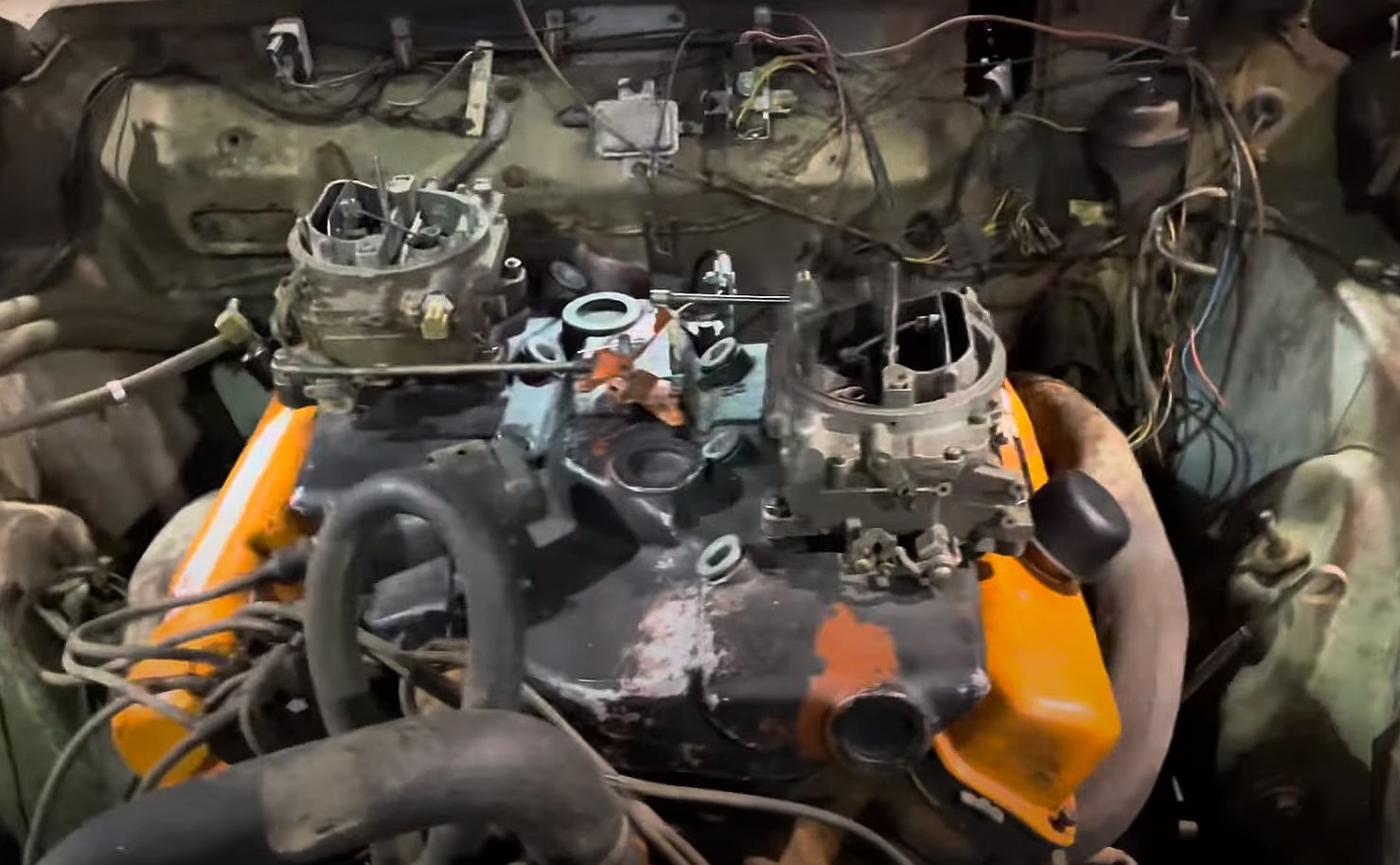
Chrysler has made a name for itself in the automotive world by producing a variety of reliable engines that power its cars and trucks. Much like its American competitors, Ford and GM, Chrysler has developed powerplants known for their durability and performance. Among these, two engines stand out for their remarkable reliability and engineering: the Slant I6 and the 440 RB V8.
The Slant I6, with a displacement of 3.7 liters, is one of Chrysler’s most notable engines. This inline-six engine is celebrated for its strength and longevity. One of the most impressive stories about the Slant I6 comes from a 1963 Plymouth Fury that was used as a taxi.
This engine managed to cover an astonishing 1.63 million miles during its lifetime, a feat that speaks volumes about its reliability. Although it underwent four rebuilds throughout its life, that still averages to about 400,000 miles between major overhauls, showcasing how robust and dependable this engine is.
The Slant I6 engine produces around 145 horsepower and 215 lb-ft of torque. It features a cast-iron construction, which adds to its durability. This engine is designed for smooth operation and has earned a reputation for being easy to maintain, making it a favorite among car enthusiasts and mechanics alike.
On the other end of the spectrum is the 440 RB V8 engine, a powerhouse with a displacement of 7.2 liters. This engine offers impressive power ranging from 225 to 390 horsepower, depending on the specific model and configuration. With torque ratings between 330 and 490 lb-ft, the 440 RB V8 delivers a thrilling driving experience that many muscle car enthusiasts cherish.
The 440 RB V8 is also made of cast iron, ensuring it can handle high stress levels and provide consistent performance. This engine was featured in various models, including the Chrysler New Yorker and the Dodge Charger, making it a versatile choice for performance-oriented vehicles.
Chrysler has consistently produced engines that are reliable and long-lasting. In the 2023 J.D. Dependability Survey, Chrysler’s Dodge brand narrowly missed a spot in the top ten, reflecting its commitment to quality and customer satisfaction. Many Chrysler owners appreciate the brand for its ability to build engines that not only perform well but also endure the test of time.
Chrysler has earned a reputation for producing reliable engines like the Slant I6 and the 440 RB V8. These powerplants exemplify the brand’s dedication to engineering excellence and performance. Whether you’re behind the wheel of a classic Chrysler or enjoying the latest models, you can count on the reliability of these engines to deliver a dependable driving experience.
Chrysler engines have a long and storied history, contributing significantly to the brand’s reputation for performance, innovation, and reliability. Chrysler, now part of Stellantis, has produced a diverse range of engines over the years, from robust V8s that power classic muscle cars to efficient turbocharged four-cylinders designed for modern sedans and SUVs. The brand’s engineering approach combines performance with practicality, catering to a wide audience from enthusiasts to everyday drivers.
One of the most notable engine families from Chrysler is the HEMI engine. The HEMI V8, with its hemispherical combustion chamber design, has become a symbol of American muscle. The HEMI engine is known for its power, torque, and distinctive sound, making it a favorite among performance enthusiasts.
The modern HEMI engines, introduced in the early 2000s, feature advanced technologies such as the Multi-Displacement System (MDS), which allows the engine to deactivate half of its cylinders under light-load conditions, improving fuel efficiency without sacrificing performance.
Available in various displacements, including the popular 5.7L and 6.4L versions, the HEMI engine powers a range of Chrysler and Dodge models, including the Charger, Challenger, and RAM trucks, delivering impressive horsepower and torque for exhilarating acceleration.
Chrysler has also embraced turbocharging, particularly in its smaller engine offerings. The 2.0L turbocharged inline-four engine, found in models like the Chrysler 300 and the Jeep Cherokee, offers a balance of power and efficiency.
This engine generates robust torque at lower RPMs, providing responsive acceleration and improved fuel economy compared to larger naturally aspirated engines. Turbocharging allows Chrysler to meet the demands for both performance and efficiency, particularly in a market that increasingly values fuel economy.
In addition to traditional gasoline engines, Chrysler has made significant strides in the development of hybrid and electric powertrains. The Chrysler Pacifica Hybrid, for instance, combines a traditional gasoline engine with an electric motor, providing an efficient and versatile family vehicle.
This hybrid powertrain allows for all-electric driving for short distances, making it ideal for urban environments while still providing the range and flexibility of a conventional gasoline engine for longer trips. Chrysler’s commitment to electrification is also evident in its plans to expand its electric vehicle offerings in the coming years, with a focus on innovative technologies that enhance performance and sustainability.
The engineering behind Chrysler engines is characterized by a focus on durability and ease of maintenance. Many Chrysler engines feature aluminum cylinder heads and lightweight materials, contributing to performance while reducing weight. Regular maintenance is made easier with accessible engine designs, ensuring that owners can keep their vehicles running smoothly. The brand’s commitment to reliability is reflected in many owners’ experiences, as Chrysler engines often deliver years of dependable service when properly maintained.
Chrysler’s V6 engines, particularly the 3.6L Pentastar V6, have become a staple across various models, including the Chrysler 300, Dodge Charger, and Jeep Grand Cherokee. Known for its smooth operation and commendable power output, the Pentastar V6 delivers a balance of performance and efficiency. This engine family has been widely praised for its ability to provide ample power for everyday driving while maintaining competitive fuel economy figures. The Pentastar V6 features advanced technologies such as variable valve timing, which enhances performance across the RPM range and contributes to reduced emissions.
Chrysler has also explored alternative fuels and technologies, reflecting the automotive industry’s shift toward sustainability. Some models, like the RAM trucks, have offered options for compressed natural gas (CNG), providing businesses and fleet operators with eco-friendly solutions without compromising performance.
As the industry continues to evolve, Chrysler is well-positioned to adapt to changing consumer preferences and environmental regulations, ensuring that its engines remain competitive in an ever-changing market.
Chrysler engines embody the brand’s legacy of performance, innovation, and reliability. From the iconic HEMI V8 to efficient turbocharged four-cylinders and hybrid powertrains, Chrysler has developed a diverse range of engines that cater to various driving needs.
The brand’s commitment to advanced technology and sustainability ensures that its engines remain relevant and capable in an increasingly competitive automotive. Whether powering a muscle car, a family sedan, or a rugged SUV, Chrysler engines continue to deliver a blend of performance and practicality that resonates with drivers around the world.
1) The Reliability of Porsche Engines: A Closer Look at the Iconic Flat Six
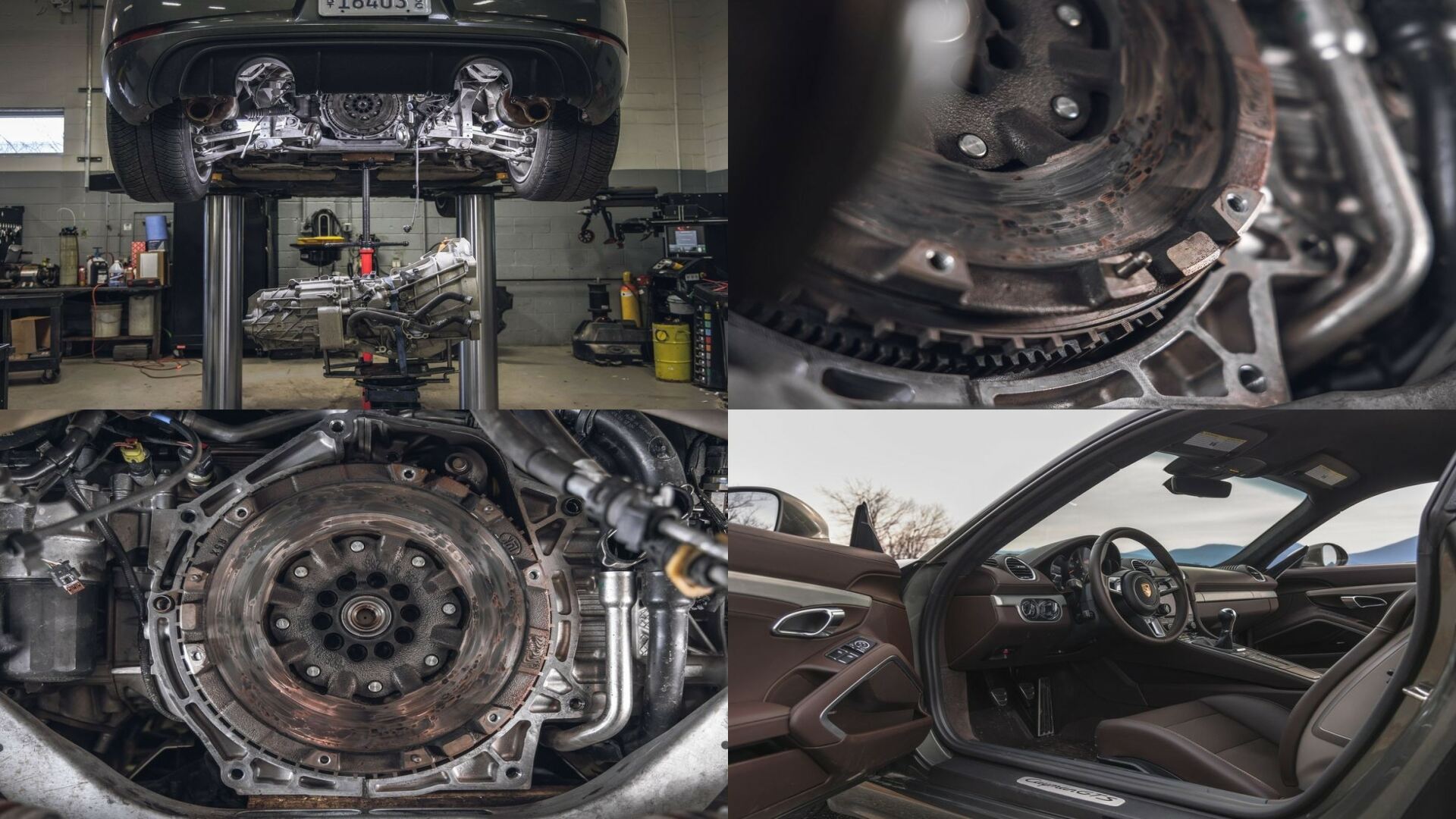
Porsche is renowned for its engineering excellence and performance-driven vehicles. Among its many achievements, the brand is especially famous for producing reliable engines that power some of the most beloved sports cars in the world. One of the standout examples is the iconic Flat Six engine, which has been a hallmark of Porsche’s performance cars since it was first introduced in 1964.
The Flat Six engine is celebrated for its unique design and performance capabilities. Available in various sizes ranging from 2.0 to 4.2 liters, this engine has powered a range of Porsche models, particularly the legendary 911.
The Flat Six produces between 158 and 305 horsepower, along with impressive torque figures that can reach up to 369 lb-ft. This powerful engine layout not only enhances the driving experience but also contributes to the reliability that Porsche is known for.
Porsche’s commitment to engineering excellence means that every engine is built to last. The Flat Six engine has undergone continuous development and refinement over the decades, making it more reliable with each iteration.
Porsche uses high-quality aluminum in the construction of its engines, which not only reduces weight but also enhances durability. When properly maintained, the Flat Six engine is known for its longevity and performance, making it a solid choice for sports car enthusiasts.
While performance is a top priority for Porsche, reliability is not overlooked. The Flat Six is designed to handle high levels of stress, making it a robust engine option for those who enjoy spirited driving. Many Porsche owners report that their engines remain strong and reliable even after years of use, a testament to the brand’s engineering prowess. However, it’s worth noting that while these engines are built to last, they can be expensive to maintain and repair if issues arise.
Porsche’s focus on developing reliable engines has solidified its reputation in the automotive world. The Flat Six is just one example of the brand’s dedication to innovation and performance. Over the years, Porsche has continued to improve this engine, incorporating new technologies and materials to enhance performance while maintaining reliability.
Porsche’s engines, particularly the Flat Six, are a shining example of the brand’s engineering excellence and commitment to performance. With its powerful output and impressive reliability, the Flat Six has become a cornerstone of the Porsche lineup, particularly in the iconic 911.
Whether you’re a seasoned enthusiast or a new owner, the reliability of Porsche engines is something to appreciate, ensuring that your driving experience is not only exhilarating but also dependable.
Porsche engines are renowned for their performance, engineering excellence, and distinctive characteristics that have become synonymous with the brand. As one of the leading manufacturers of high-performance sports cars, Porsche has developed a range of engines that combine power, efficiency, and driving pleasure.
The company’s approach to engine design emphasizes precision engineering, innovative technology, and a commitment to delivering an exhilarating driving experience.
At the heart of Porsche’s engineering philosophy is the focus on balance and performance. Many Porsche models feature a rear-engine layout, particularly the iconic 911. This configuration enhances weight distribution and stability, contributing to the brand’s reputation for exceptional handling.
The engines are typically positioned low in the chassis, lowering the center of gravity and improving dynamics. This design principle is evident across various Porsche models, allowing for a connected and responsive driving experience.
One of the most notable engine configurations found in Porsche vehicles is the flat-six engine. The flat-six, or boxer engine, features horizontally opposed cylinders, which not only provides a unique sound but also contributes to the car’s low profile and balance. The flat-six engine delivers smooth power delivery and responsive acceleration, making it a favorite among driving enthusiasts. In models like the Porsche 911 Carrera, the flat-six engine is available in various displacements and power outputs, catering to different performance needs.
In addition to the flat-six, Porsche has also embraced turbocharging across its lineup, particularly in recent years. The introduction of turbocharged engines has allowed Porsche to strike a balance between performance and efficiency.
Turbocharged flat-six engines, such as those found in the 911 Turbo and 911 GT2 RS, deliver remarkable power and torque while maintaining relatively low emissions. The result is a thrilling driving experience with exhilarating acceleration, especially at higher speeds.
Porsche has also expanded its engine offerings to include four-cylinder engines, particularly in models like the Porsche 718 Cayman and 718 Boxster. These engines are lightweight and efficient, providing a sporty driving experience while contributing to the agility of the vehicles. The turbocharged flat-four engines deliver impressive performance, combining the characteristic Porsche handling with enhanced fuel efficiency.
Another important aspect of Porsche engines is their connection to motorsport. Porsche has a storied history in racing, and this experience has heavily influenced its engine development.
The technology and innovations developed for racing engines often find their way into production models, ensuring that Porsche vehicles are equipped with cutting-edge technology. Features like variable valve timing, direct fuel injection, and advanced cooling systems are commonplace in Porsche engines, enhancing performance and reliability.
Porsche’s commitment to performance extends beyond just power. Many engines are paired with advanced transmission systems, such as the Porsche Doppelkupplung (PDK), a dual-clutch automatic transmission that offers rapid gear changes and optimal performance.
This technology allows drivers to experience seamless shifts, whether on the road or the racetrack. The PDK transmission is often complemented by Porsche’s Active Suspension Management (PASM) and other performance-enhancing systems, further enhancing the driving experience.
Porsche’s dedication to innovation is evident in its foray into hybrid and electric technology. The Porsche Taycan, the brand’s first all-electric sports car, features advanced electric motors that deliver instant torque and remarkable performance.
The Taycan’s dual-motor setup allows for all-wheel drive and exceptional acceleration, showcasing Porsche’s ability to adapt to changing automotive trends while maintaining its performance ethos. The transition to electric power also highlights Porsche’s commitment to sustainability and efficiency.
In terms of engine maintenance and longevity, Porsche engines are designed to withstand the rigors of performance driving. High-quality materials and precise engineering ensure that these engines can endure demanding conditions.
Regular maintenance, such as oil changes and inspections, is essential for keeping Porsche engines in peak condition. Porsche’s dedication to service and parts availability also means that owners have access to genuine parts and expert service, ensuring that their vehicles remain in top shape for years to come.
Porsche engines epitomize the brand’s commitment to performance, precision, and innovation. With a diverse range of engine configurations, from the iconic flat-six to turbocharged four-cylinders and electric motors, Porsche continues to push the boundaries of what is possible in high-performance automobiles. Whether on the racetrack or the open road, Porsche engines deliver an exhilarating driving experience that captivates enthusiasts and drivers alike.

